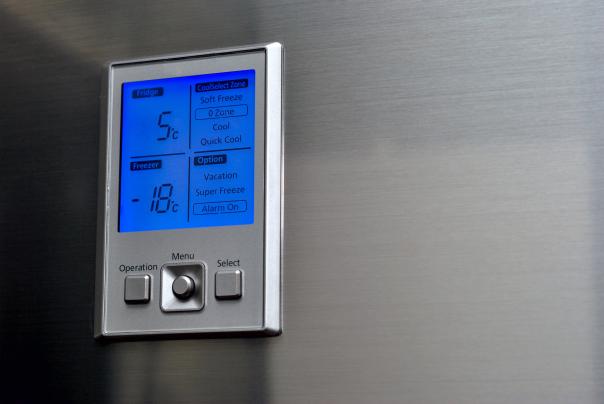
When looking for equipment you need to pay attention to the energy label, which will give information on the unit’s energy consumption.
These labels also show the climate class of the equipment, which tells you the ambient temperature and humidity conditions it can handle – these range from subnormal, which usually applies to freezers which can operate between 10°C and 32°C up to tropical, with a tolerance for temperatures between 16°C and 43°C.
Even powerful professional refrigeration systems have their limits, and shouldn’t be installed next to cooking equipment as the heat they produce will cause them to use more energy to keep cool.
Choose equipment that helps your staff, too. Counter units can improve kitchen workflow and thereby help your staff to carry out their tasks efficiently, while drawer units release less cold than door units when they’re opened.
Filling your fridges with your daily consumables will reduce the amount of time you have to open up larger storage units or coldrooms. But don’t overfill them - blocked airways can compromise food safety and lead to higher energy consumption.
Cardboard packaging should be removed first as it can slow down the cooling process. And it’s also important to ensure that coldroom doors are kept closed whenever they’re not being used, even if you’re just nipping out to the van to collect more stuff! The longer they’re open the more energy is used to maintain the operating temperature.”
Cut down on chemicals
Dishwash chemicals have evolved, providing opportunities to help reach sustainability goals. A new generation of concentrated dishwasher chemicals can cut usage by up to 40% for detergent and 60% for rinse aid, says Meiko.
This saves on road miles and packaging, and – thanks to the minimal use of chlorine, phosphates and other environmental ‘nasties’ – provides dishwash chemicals that are less damaging to the environment. Now is the right time to find out more and try new chemicals to prove how they work in your kitchen.
Meat swaps can save
Beef can be one of the more expensive types of meat so swapping out some, or all, of it and replacing it with minced pork, lamb, chicken or turkey, could make things cheaper.
If you’re really looking to cut costs, then you might want to consider replacing a portion of minced meat with a handful of lentils or beans for sauce-based dishes.
Quantity-wise, you can replace 500g of uncooked meat with 150g of uncooked lentils. With lentils costing around 35p-40p for 150g, this should cut your costs dramatically.